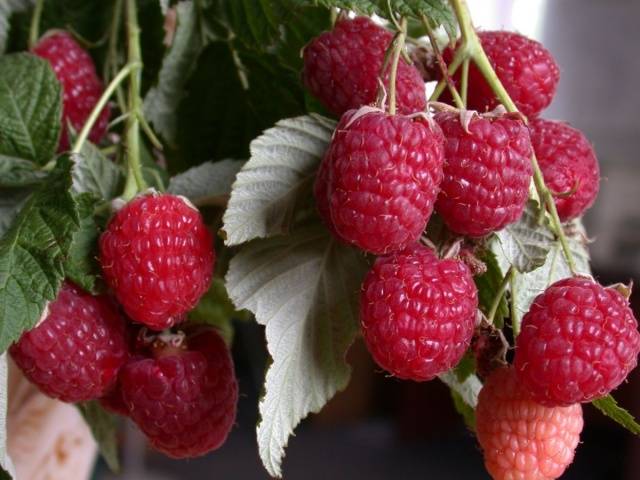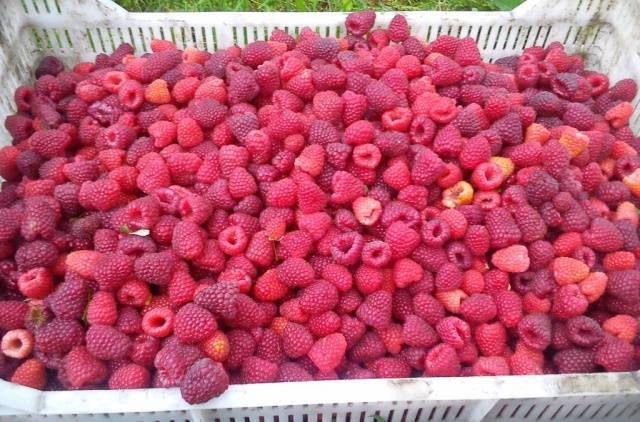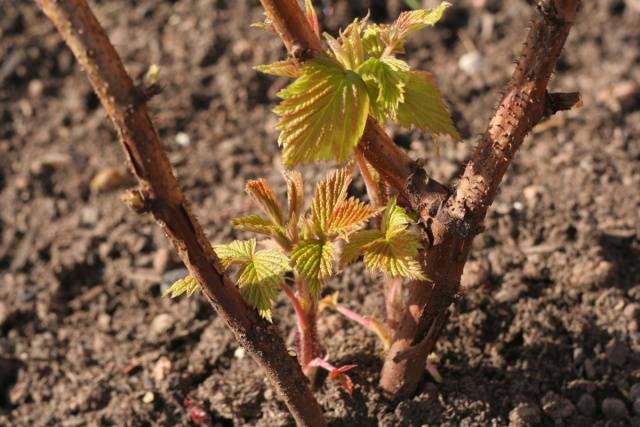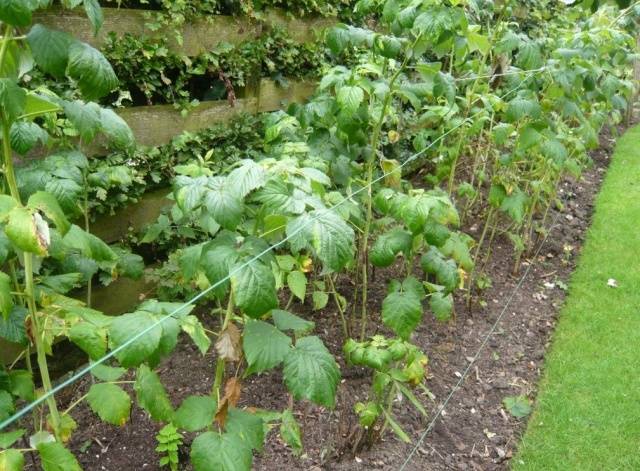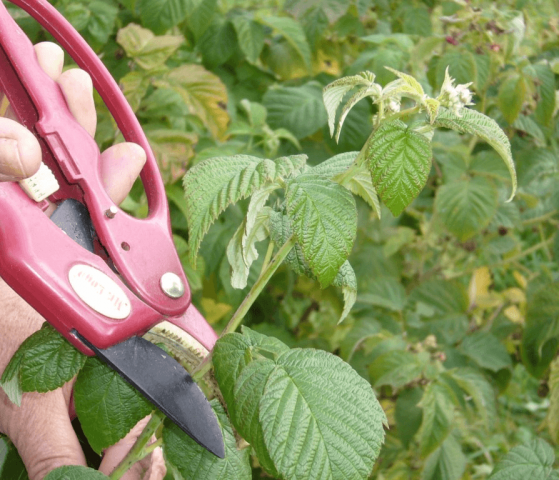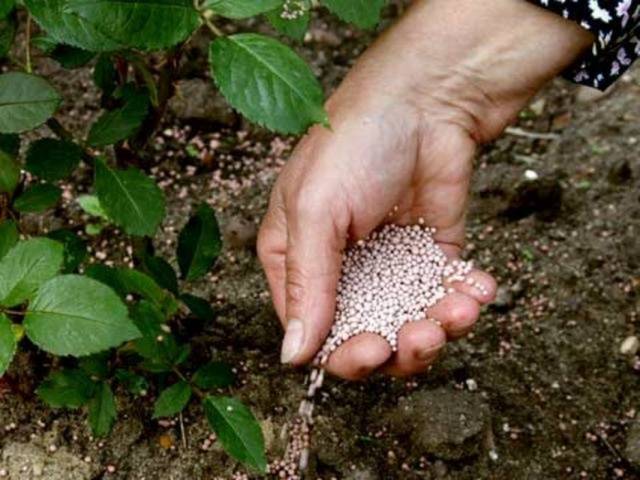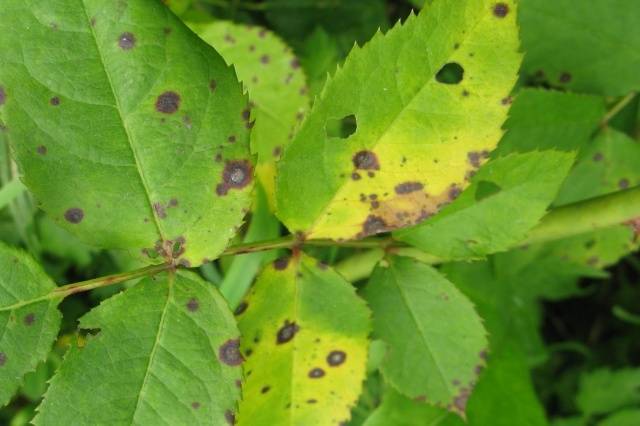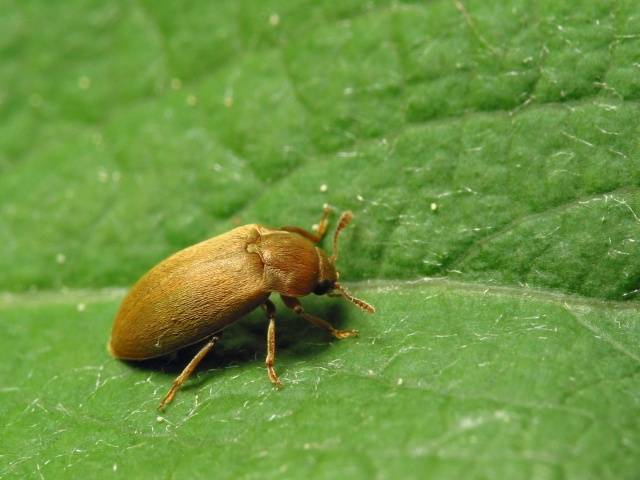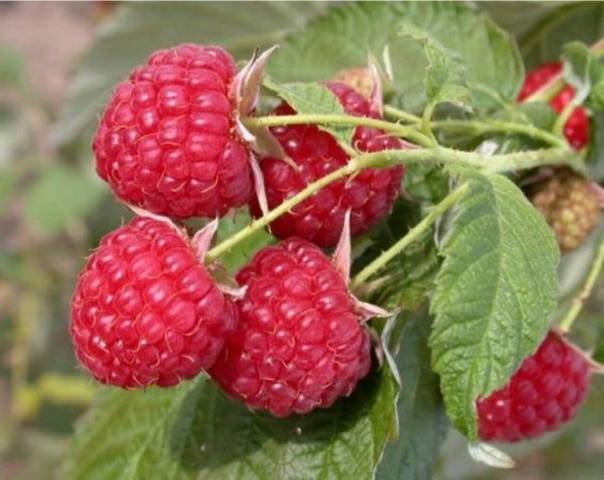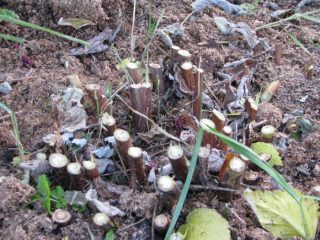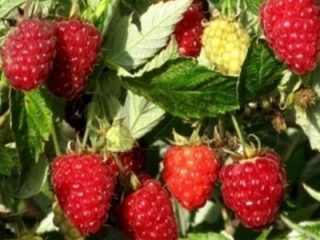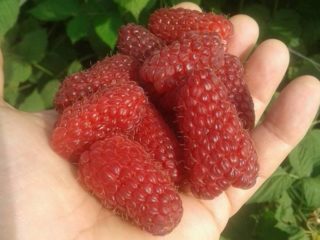Content
The raspberry regiment (Polka) is the result of the work of Polish breeders. Today it is a popular type of remontant. raspberrieswhich is exported to other countries and grown on an industrial scale.
However, raspberry polka is also suitable for ordinary vegetable gardens. Its high yield and excellent taste are especially appreciated.
Characteristics of the variety
Raspberry polka is a medium-sized shrub up to 1.8 m high. The average height of this variety is 1.5 m. Up to 10 shoots are formed on one seedling. The stems have soft thorns.
Ripening of berries begins early enough. The first crop of raspberries can be removed from new shoots at the end of July, and fruiting continues until the onset of frost. Compared to other varieties, the raspberry of the shelf starts fruit formation two weeks earlier and lasts for three months.
The berries weigh about 3.6 g. With active feeding, they grow up to 6 g. As you can see in the photo, up to 10 conical fruits ripen on each brush. The drupe is small, practically not felt, and the raspberries themselves are quite juicy.
An important feature is the low winter hardiness of the variety. The raspberry shelf may not withstand severe frosts. Warming the root system for the winter will help to solve the problem.
Variety yield
Raspberry polka has a high yield. According to the description of the breeders, up to 4 kg of berries are removed from one bush. Fruiting continues even when the temperature drops to 0 C.
The crop is removed twice a year. On last year's shoots, berries are formed at the beginning of summer. Such a regime implies a serious load on the plant. Therefore, it is recommended to prune old stems so that the main fruiting occurs on new shoots.
The peel of the raspberry on the shelf is dense enough that it can be transported over long distances.
Landing rules
From the correct planting raspberries shelf depends on the development of the shrub and the quality of the crop. Raspberries are planted in early April or autumn. The most favorable planting is in late September or early October.
Raspberry shelf takes root well on light to medium loam. Good natural light has a positive effect on the flavor of the berries. You can place the raspberry tree along the barriers or next to buildings.
The planting of the raspberry shelf takes place according to a certain order:
- Two weeks before disembarkation, holes are dug 0.5 m deep and 0.4 m in diameter.
- 0.5 - 1 m is left between the plants, and up to 2 m between the rows of shrubs.
- Fertilizer is prepared for one square meter of the plot: 20 kg of manure, 50 g of potassium sulfate, 70 g of superphosphate. The pits prepared for raspberries are poured with the resulting mixture.
- A shelf raspberry seedling is placed in a pit and the root system is straightened. The replacement kidney is placed 5 cm from the surface of the earth.
- The pit is covered with soil, which is trampled down a little.
- A bucket of water is poured under each bush.
- The soil under the raspberry shelf is mulched with straw or peat.
- Above the surface of the soil, leave 0.4 m from the seedling.
Care features
Quality care ensures abundant fruiting of the shelf raspberries.The procedure for caring for a raspberry tree is standard and includes pruning, watering, loosening and feeding the shrub.
Pruning rules
Trimming a raspberry shelf allows you to form a bush consisting of 7 shoots. The order of work depends on the number of crops that are planned to be harvested:
- If a single crop is grown, the shelf raspberry is pruned in November. Branches are removed at the root.
- If the crop needs to be harvested twice, then the stems are cut in the spring and fall. The branches on which the berries were located, as well as dry and damaged stems are removed. On old shoots of raspberries, the harvest grows by summer, and on young ones - in autumn.
Watering and loosening rules
The polka variety needs constant soil moisture. The plant is watered during flowering and ripening of berries. If there is little rainfall in the fall, then winter watering is performed.
Each raspberry bush requires up to 3 buckets of water. So, soil moisture is achieved to a depth of 0.4 m.
Loosening the soil improves the penetration of moisture and air. At the beginning of the season, loosening is carried out before flowering to a depth of 7 cm. The procedure is repeated 5-6 times throughout the year.
Feeding raspberries
The use of fertilizers has a positive effect on the growth and yield of the shelf raspberries. The first feeding is done in spring before the growing season. For this, an organic fertilizer is used, which is diluted with water in a ratio of 1 to 10 liters of water.
In the summer, feeding is carried out once a month. For raspberries of the shelf, ready-made complex formulations are selected containing ammonium nitrate, potassium salt, superphosphate.
In autumn, organic fertilizer is applied to the raspberry plant at the rate of 5 kg per square meter of the plot.
Disease protection
The polka raspberry variety is not susceptible to most diseases characteristic of this shrub species. The most vulnerable is the root system, which can be seriously affected by various lesions.
Root cancer
Root cancer is expressed by the presence of knotty growths on the roots, which eventually reach the size of a walnut. As a result, the ability of the shelf raspberry to absorb moisture and nutrients deteriorates. Cancer is caused by pathogenic bacteria that can remain in the ground for up to 3 years.
To prevent cancer, the raspberry shelf is fertilized with substances containing phosphorus and potassium. They prevent the spread of harmful microorganisms and keep the soil moist.
Purple spot
With a lack of potassium or increased acidity of the soil, purple spots appear on the raspberries of the shelf. Over time, they acquire a brown tint, after which the damaged elements of the plant die off.
The affected parts of the raspberry shelf are removed and burned. Before flowering and after harvest, raspberries are treated with Bordeaux mixture or other fungicides.
Pest control
Garden pests can cause significant damage to the raspberry shelf. Most often, the raspberry plant attracts the stem fly, raspberry beetle, gall midge, weevil, and Putin tick. As a result, leaves, inflorescences, and raspberry stems are damaged.
All affected parts of the shrub are removed and then burned. The procedure is carried out in spring or autumn. When gall midge appears, the raspberry shoots of the shelf are cut off at the root.
The following measures help prevent the appearance of pests:
- leave free space between the bushes;
- the raspberry shelf is trimmed annually;
- in the fall, the soil is dug up;
- during the season, the soil is loosened under the raspberries;
- removed weedsthat can become a haven for insects.
Gardeners reviews
Conclusion
Raspberry shelf has excellent taste, which makes it stand out among the remontant varieties. The shrub gives a bountiful harvest, so the variety is often chosen for industrial cultivation. When planting, it is important to ensure that the raspberries are fed. Plant care includes pruning, watering and loosening. Raspberry shelf is rarely affected by disease and is resistant to most pests.
